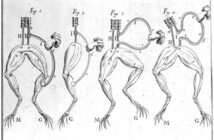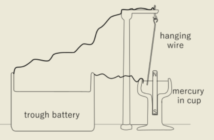
Born on February 11, 1847 in Milan, Ohio, Thomas Lava Edison was among the reputable inventors and businessmen who have led the world towards innovations. He has acquired about 1093 patents in the United States of America and a few more in countries such as France, the United Kingdom and Germany.
Thomas Edison was the youngest child of Samuel Ogden Edison, Jr. and Nancy Matthew Elliott. He has entered school during his childhood, but because his mind usually wandered even during classes, his teacher did not appreciate it, thus, ending his three months of official schooling. Because of that, his mother was the one who guided him to knowing the basics he should have learned at school.
Thomas Edison lost his hearing capability when he was young. According to some, it was because of the recurrent middle ear infection and scarlet fever which were never treated. In the later years, Thomas said that the impairment was because a train conductor struck him in the ears.
Thomas Edison fell in love twice. He first married Mary Stilwell in 1855. She bore 3 children named Marion Estelle Edison (1873-1965), Thomas Alva Edison, Jr. (1876-1935) and William Leslie Edison (1878-1937). Their marriage lasted only 13 years because Mary died. In 1886, he married Mina Miller, who also bore 3 children named Madeleine Edison (1888-1979), Charles Edison (1890-1969) and Theodore Edison (1898-1992).
From rags to riches, he acquired the pedestal because of his intelligence and love of invention. He has crafted several materials which are still being used and improved on up to today. Some of his inventions are:
- Phonograph (1877)
- Carbon Microphone (1877-78)
- Incandescent Light bulb (1879)
- Brockton Breakthrough (1883)
- Kinetoscope, Kinetograph and Kinetophone (1888-1890s)
- Nickel-Iron Batteries (1901)
Thomas Edison on Battery Invention
Thomas Edison wanted to provide solution to the low-powered batteries in electric vehicles. In 1980s, gasoline-powered vehicles were not very reliable or efficient. Electric vehicles were hot in the market. The downside was that they used lead-acid batteries which were extremely heavy yet cannot supply ample power to the vehicle. As a solution, Edison has gone through several experiments to find the appropriate materials for a much better battery.
In 1903, Edison finished the battery and stated bold claims about its capabilities. The battery he made used potassium hydroxide which reacts to the nickel and iron electrodes, providing sufficient power to the vehicle. Manufacturers bought these to replace lead-acid batteries. After a short while, several inaccuracies came out which led to failures. He immediately decided to stop the production and went back to experimenting once again. In 1905-08, the old battery was redesigned. He used much more expensive materials which provided better performance and power. In 1910, the new battery has been released.
However, it was already late. Henry Ford, who happened to be a friend of Edison, has found ways on how to improve gasoline-powered vehicles in 1909. The introduction of the Model T car has captured the interest of the public, especially when oil was found in Texas, making gasoline more affordable compared with batteries.
The new battery Edison made was not really ignored as it became essential backup power supply of railroad crossing signals, lamps in mines, and so on. Although his dream of improving the capabilities of electric vehicles was a failure, his newly developed battery became a vital part to other gears, thus, providing him high profit years after.
Related Articles:
Alessandro Volta: Father of Modern Battery
A Brief History of Electric Vehicles
Energy Efficiency: Electric Cars



